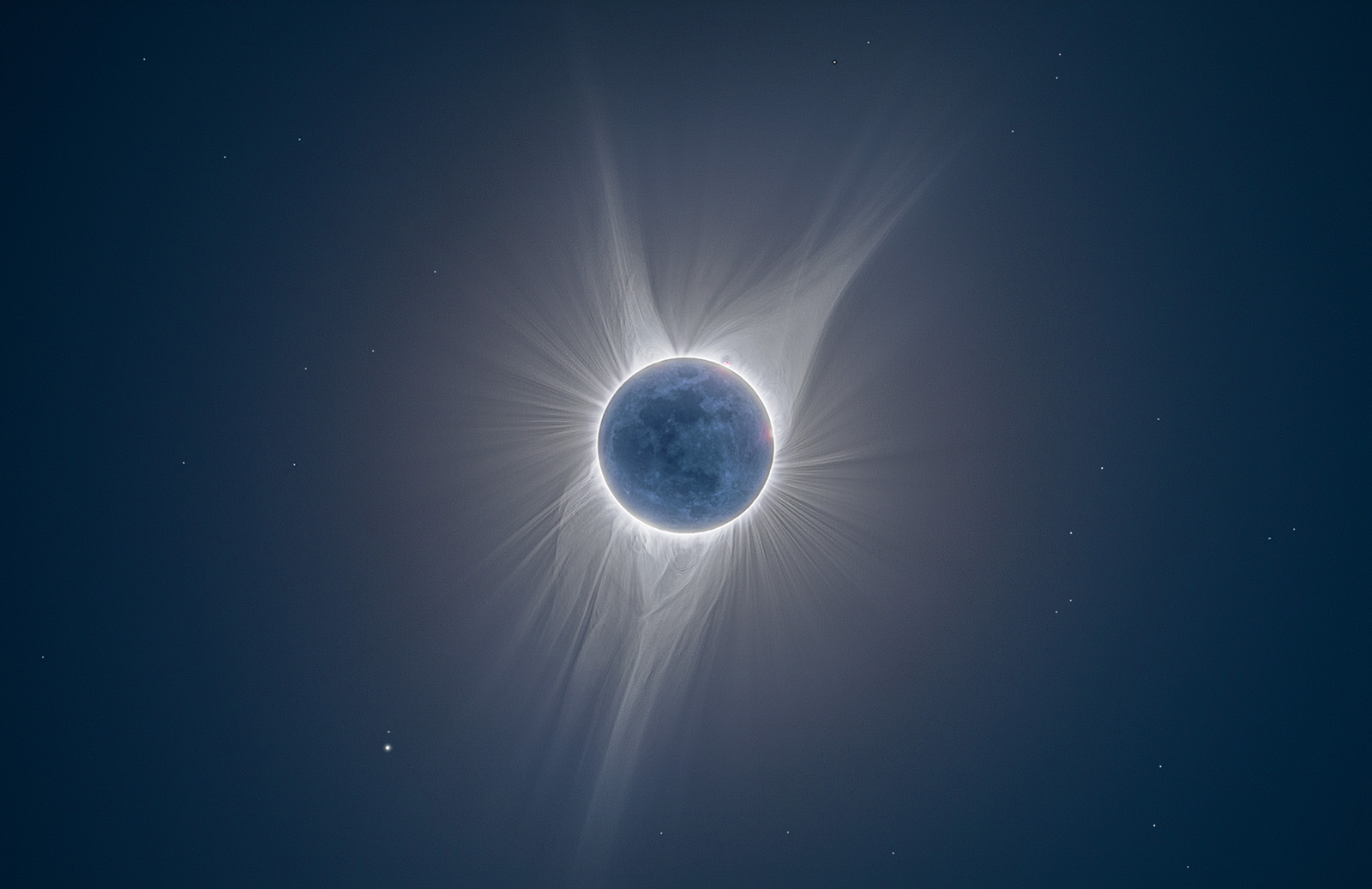
The Sun, the Moon and the Stars
In 1919 Sir Arthur Eddington led an expedition to Príncipe,
a small island off the west coast of Africa, to observe the total solar eclipse on May 29th.
Totality lasted a remarkable six minutes and fifty one seconds, just shy
of the seven minutes and thrity two second, absolute maximum possible.
With the bright Hyades open star-cluster behind the Sun, the stars literally aligned for Eddington.
It allowed him to expose a relatively insensitive photographic plate (compared to modern digital sensors)
during the eclipse to record the stars surrounding the Sun during totality.
Their positions could then be compared with an image of the Hyades
taken several months earlier at night (i.e. sans Sun) and so test a prediction of "general relativity".
The then novel theory, was suggested by an obscure 40 year old Physicist living in Berlin.
His name was Albert Einstein.
Eddington's observations proved Einstein was correct.
Matter distorts space, which in turn, tells matter how to move through that space.
The image seen here was captured just shy of 100 years after Eddingtion's
expedition and subsequent verification of Einstein's theory.
The theory has been tested many times since.
According to the European Space Agency Hipparcos satellite scientists,
(Hipparcos has charted the positions of over 100,000 stars to within 45 milli-arc seconds)
Einstein's prediction is correct to within one part in a thousand.
Some 30 field stars, the brightest of which is Regulus
can be seen in the image of the 2017 total solar eclipse below.

Images and text copyright Peter J Ward 2019
Image captured with Losmandy Starlapse, Takahashi FSQ85, Canon 5DMKIV.
Processing with Photoshop CC 2019

Can you see all 26 grey scales above?